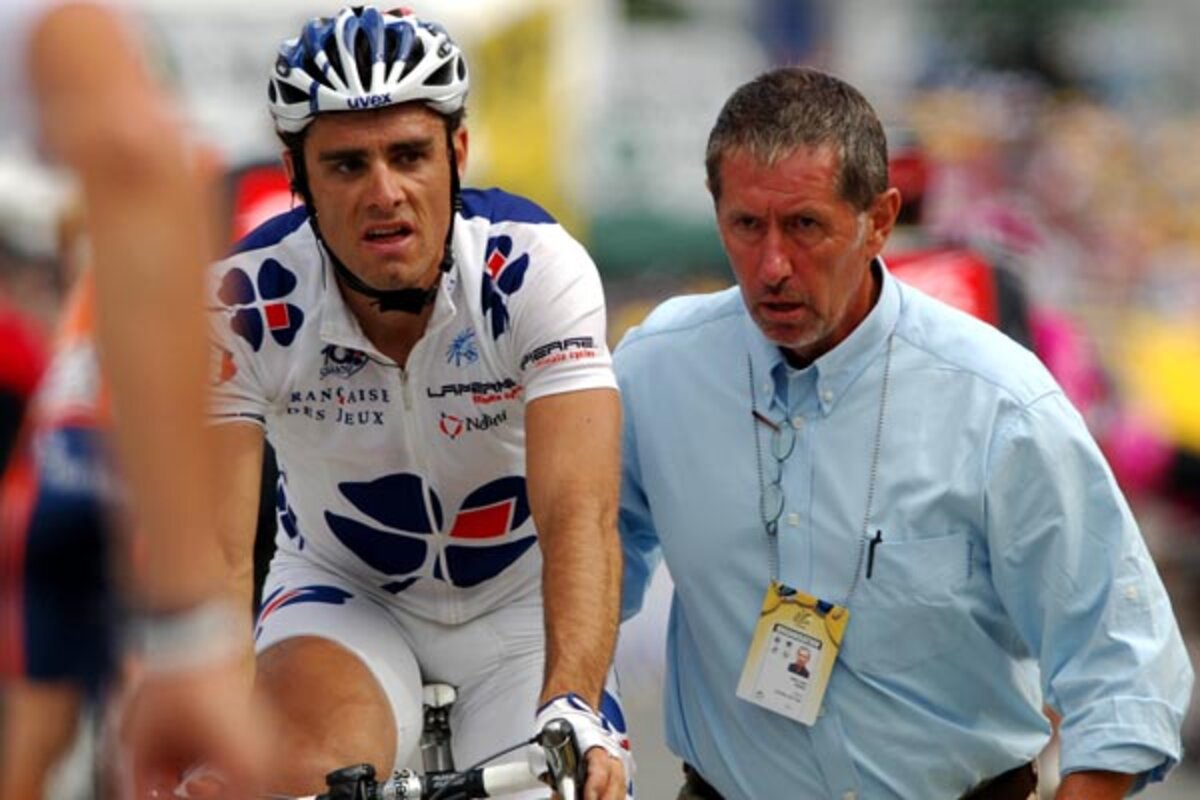How are Tour de France towns are picked? Incognito.
Loading...
| Montargis, France
Attention mayors of France: if you see a middle-aged man with buzzed gray hair and black-rimmed glasses sketching a map of your town in a spiral notebook, get excited.
You may be hosting a stage of the Tour de France in the future.
You won't find out for sure until October, when the Amaury Sports Organization (ASO), which owns and manages the Tour, announces the race’s route for the following year.
But by then, the course has already been set for almost two years, thanks to the work of that mysterious sketchbook artist.
His name is Jean-Louis Pagés.
Incognito reconnaissance
A former geography professor, he has likely seen more of France than anyone else his age. Now he's ASO site director, traversing the country each year to scout out potential host towns, called ±π汱ٱٱ≤ı-√©≥Ÿ≤π±Ë±≤ı in French, for upcoming races.
Here‚Äôs how his job works : if a town is interested in hosting a start, finish or both, local officials send a letter to Tour de France director ∫£Ω«¥Û…Ò Prudhomme. Mr. Prudhomme relays the town‚Äôs coordinates to Pag√®s, who heads out to do incognito reconnaissance, like a food critic examining a new restaurant.
It’s demanding work – this year he will spend over half the year away from home. The Tour alternates clockwise and counter-clockwise directions around France each year, so much of his travel is based upon the envisioned route.
The most important criterion for a town’s selection is geography, according to the ASO.
4,500 people, 50 TV trucks, and 20+ miles of cables
When P√Ýges reaches a town, he walks around to determine if it can support the Tour, a traveling circus of more than 4,500 people. The race‚Äôs technical team alone ‚Äì comprised of more than 50 television trucks and 20 miles of cabling ‚Äì rules out many potential sites.
If a town will work, the visit is over. If not, for reasons such as lack of facilities or poor road layout, it is written off.
Occasionally, however, Pagès is given leeway to negotiate with government officials.
“I tell the mayor, we can have [a stage] here but you need to do some work, ” he says. “Are you OK with this or not?”
Today's stage finish: Gueugnon
Two years ago, he visited the small factory town of Gueugnon, France. Today, a small herd of the world's best cyclists are pedaling furiously toward the Burgundy village, into the finish area Pagès envisioned long before the peloton arrived.
It was one of his easier picks.
“There was no work really; maybe at the finish they redid the road here,” says Pagès, drawing the final kilometer’s layout in my notepad.
“Walking around, I saw that we couldn’t arrive from the [south],” he says. “So I told the people who lay out the finish area map that we had to come in from the [north].”
Late this afternoon, the peloton will descend on the town from the north and zip by a massive steel factory in the last kilometer.
After passing the mayor’s office and the cathedral, they’ll cross the finish line on the banks of the Arroux river in front of thousands of residents and traveling fans.
$100,000 or more to host a stage finish
Hosting a stage of the Tour de France is not a cheap proposition. A typical fee to host a start is €45,000 ($57,000), according to organizers. For finishes, a more complicated venture, the fee is doubled.
And for a grand départ, the opening stage of the Tour, is even more. In 2007, London paid upwards of €1.5 million ($1.9 million) to host the start. The fees are partially to cover the ASO’s expenses – throughout the race they pay for employees and the racing teams, though the teams pay for gas.
Despite the costs and the damaging effect of doping scandals on the Tour's image, it’s clear that interest in hosting the 107-year-old race hasn’t waned.
This year alone, organizers received over 250 bids from potential hosts and there are 11 new towns, including Gueugnon, in the 20-stage, 2,263-mile race.
Race day
But Pagès also has a vital role to play on race day.
Each day he arrives at the arrival town around 5:30 a.m. to draw the finish line in chalk. By 11 a.m. his crew of 55 has finished installing bleachers, monitors, and other equipment at the finish.
Then he’s mentally moving forward, looking to the challenges he’ll face throughout the next few weeks.
“In my head I am already thinking about [Stage 17’s] finish up the Col du Tourmalet and then to Bordeaux,” he said. “I am the eyes and ears of the Tour in advance.”
2015 Tour de France
I have seen the future of the Tour de France and it is on a BlackBerry.
Sitting in the press center Thursday, Pagès thumbed his smartphone, going through how many years of the race he has planned in advance.
“2011 is finished, the route is done,” he said proudly, scrolling past a folder for 2015. “And I can’t tell you officially, but for 2017 we have some ideas.”
RELATED STORIES:




